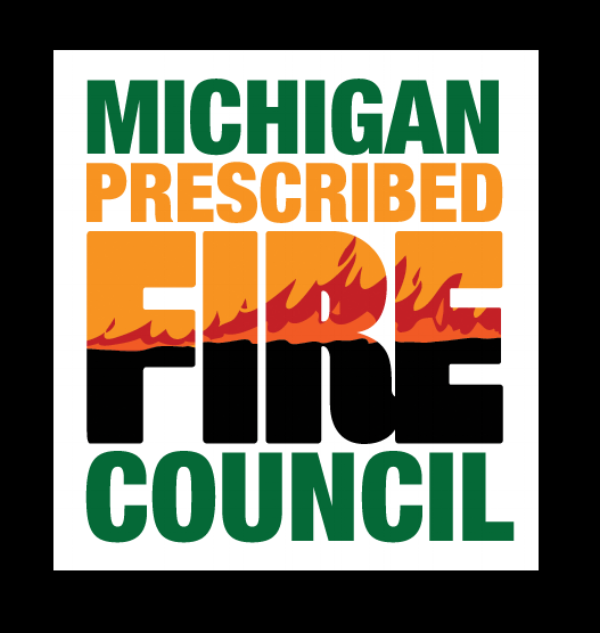When researchers ask people why they have difficulty getting fire on the ground, there are a few answers that they consistently hear: one is pressure from upper management to stay away from any unpopular, potentially dangerous tasks. Another is lack of qualified staff, followed by lack of resources. Everything from negative public perception to untrained staff could be fixed with one crucial component that we currently lack, especially in places where fire doesn’t get in the news very much: FUNDING.
Even if funding is sparse for environmental organizations, there are plenty of opportunities to receive federal financial assistance for a variety of different conservation activities, including prescribed fire. This week I’d like to share a few different ways to receive financial assistance for prescribed fire. All credit for this information goes to Andy Henriksen, a State Forester for the USDA in Michigan and member of the Michigan Prescribed Fire Council. This is going to be a link-heavy post, so get your clicking fingers ready!
for starters…
First, visit this link: https://www.nrcs.usda.gov/wps/portal/nrcs/mi/programs/financial/. The Natural Resources Conservation Service, an arm of the USDA, offers three main programs for financial assistance for conservation work in Michigan: the Environmental Quality Incentives Program (EQIP), the Conservation Stewardship Program (CSP), and the Conservation Activity Plan (CAP). EQIP provides financial assistance for a wide variety of conservation work on agricultural land, forest land and associated lands (wetlands, grasslands, etc.). There are dozens of conservation practices available through EQIP, many of which have multiple “payment scenarios” that set the payment rate for program participants. You can see the payment rates here: https://www.nrcs.usda.gov/wps/portal/nrcs/detail/national/programs/financial/?cid=nrcseprd1328244. There are special rates for those that qualify as “Historically Underserved”. From that payment schedule, there are a few practices that are specifically fire-related:
Firebreak (394) – payments range from $0.03 to $2.91 per foot depending on the site conditions and type of equipment needed. This is a perimeter grass or bare soil area to contain a planned prescribed fire, or to create a buffer between a high risk fire prone area and an area needing protection (home, farm, forest, etc).
Fuelbreak (383) - $1168.76 per acre. This practice is for thinning and pruning an existing stand of trees to reduce the risk of crown-to-crown fire spread and remove ladder fuels to reduce the risk of a ground fire becoming a crown fire.
Prescribed Burning (338) – payments range from $16.31 to $136.13 per acre, depending on site conditions.
eqip
EQIP is a competitive program, meaning that applications with a higher anticipated environmental benefit are chosen for funding first. However, we have multiple funding pools available, each with their own allocations, so that, for example, forest land applications compete only with each other, not also with row farmers or livestock producers. Also, the funding pools are broken down by regions of the state. So, the end result is that everyone has a pretty good chance of being selected for funding. The ranking tools are available here, so you can sort of see what goes into determining who gets funded and who doesn’t : https://www.nrcs.usda.gov/wps/portal/nrcs/mi/programs/financial/eqip/STELPRDB1270324/
For general information on EQIP, click here: https://www.nrcs.usda.gov/wps/portal/nrcs/mi/programs/financial/eqip/.
For steps to apply for and receive funding, click here: https://www.nrcs.usda.gov/wps/portal/nrcs/detailfull/national/newsroom/features/?cid=stelprdb1193811
cSP
The CSP program mentioned above is a bit less straightforward in how it operates, but at the end of the day, it does the same thing – provides funding to do conservation work. CSP differs slightly in that in addition to addressing resource concerns (like EQIP), it also provides funding for “enhancements” which take existing resources and improve them further. For more CSP info, click here: https://www.nrcs.usda.gov/wps/portal/nrcs/mi/programs/financial/csp/ The best way for any interested landowner or manager to find out more about CSP and EQIP is to get in touch with a conservationist at their local service center. They have 57 field offices in MI that have staff that work on these programs. One can find his or her local service center here: https://www.nrcs.usda.gov/wps/portal/nrcs/mi/contact/local/
CAP
The CAP program is much like the CSP program, and provides specific instructions on attaining funding for prescribed burning activities. Follow the following link to see the specific criteria surrounding their definition of burning, and what you’ll have to do to qualify for funding.
https://www.nrcs.usda.gov/wps/PA_NRCSConsumption/download?cid=nrcseprd1355220&ext=docx
JFSP
Joint Fire Science Program Funding: https://www.firescience.gov/JFSP_funding_announcements.cfm
JFSP releases yearly funding opportunities, similar to what USDA offers - federal dollars given to qualified applicants for conservation work.
Their four categories this year are: Reducing damages and losses to valued resources from wildfire, Graduate Research Innovation, Effectiveness of fuel breaks and fuel break systems, and Regional Science Exchange and Outreach.
Graduate research innovation specifically is asking for research on the “Relative impacts of prescribed fire versus wildfire”, while the other opportunities are a shoe-in for those actively operating with prescribed burn regimens.
If you think there’s any chance you could benefit from these programs, I implore you to apply! I can assure you there are dozens of other people just as interested as you are, wondering whether or not they’d even qualify for these programs. Give it a shot. Shoot an e-mail to your supervisor and ask if your organization would consider applying for these financial assistance programs. There’s federal funding just waiting to be taken and put into conservation, into programs that actually work. Why shouldn’t it be your program?

